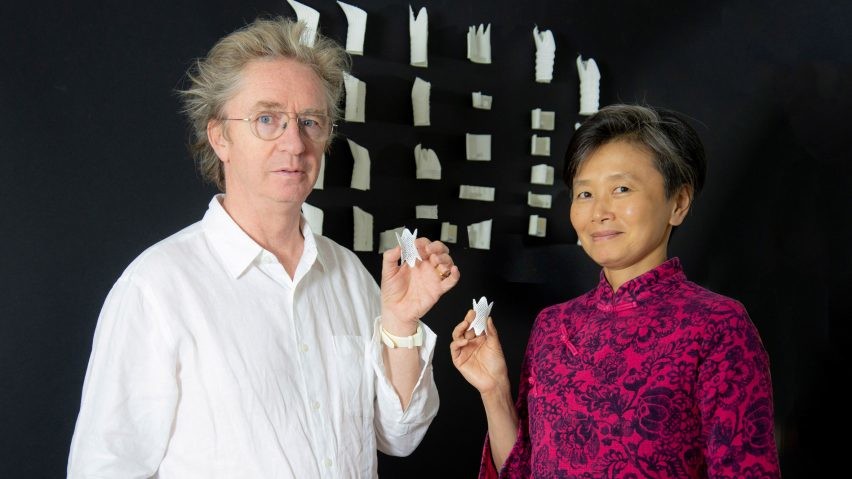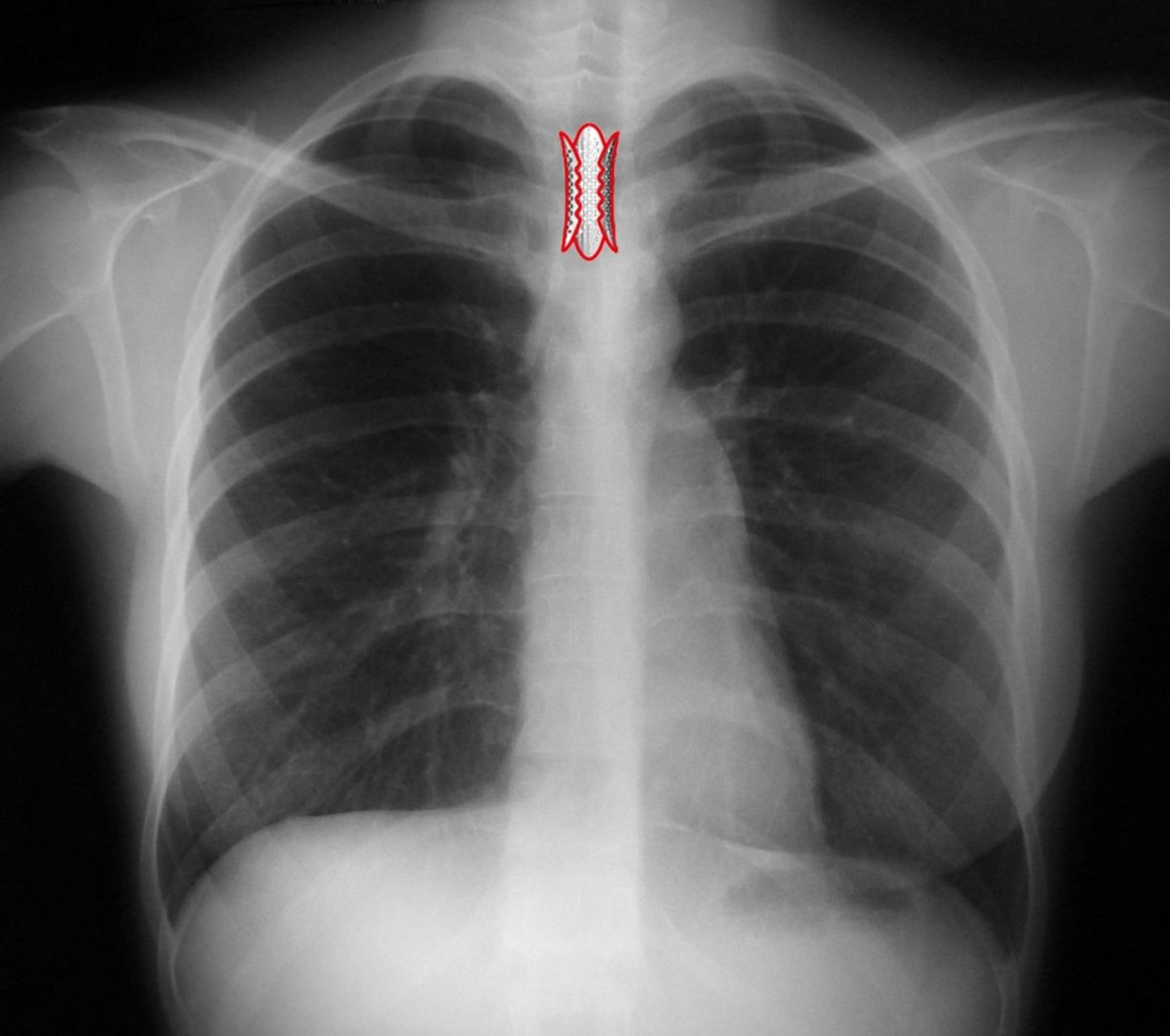Architects Mike Tonkin and Anna Liu are the founders of Tonkin Liu, the award-winning architecture studio based in London, UK. Their diverse work is heavily inspired by nature, which is particularly true of their “shell lace structure”, a single surface structure that’s been in development for 10 years.
The purpose of the shell is to perform as efficiently as a material from the natural world. In fact, to design it, the architects worked with scientists from the Natural History Museum. The resulting structures are based on mollusks and plants. Until now, they’ve mostly found use in architectural designs, such as towers, bridges and pavilions.
Now, the architects believe the technology has another ground-breaking use. In particular, they’ve developed a stent for tracheal transplant surgery patients. Whereas conventional stents are mesh tubes, Tonkin’s and Liu’s version is C-shaped and naturally fits the shape of a patient’s throat.
The prototype stent has a perforated structure and is designed to enable the wound to “breathe”. It also allows easy drug administration to tissues, helping prevent infection. It’s made from medical grade silicone.
Martin Birchall, UCL professor of laryngology said the prototype is “a remarkable and unprecedented stent invention that is ground-breaking in the context of currently available devices.”

Researching the Trachea Using 3D Scanning and Printing
Tonkin and Liu decided to apply their technology to develop prototype stents after learning about the unmet medical need. To design the stent, they joined forced with engineers from Arup, and together the two groups received funding from Innovate UK, the British government’s innovation fund.
Creating a stent required making the architectural shell lace structure 500 times smaller. To research how best to use the structure, the architects scanned a pig’s trachea (which is similar to a human’s throat) and 3D printed a model that was five times larger than a real trachea.
By studying this model, they could develop an effective stent prototype. In an interview with Dezeen, Liu had this to say:
“To us it was no different to observing the particular characteristics of a site. What were its peculiarities, the demands, and the opportunities? We mimicked these characteristics through a series of simple and intuitive rubber band models, which would later prove to be key to our invention.”
The architects hope that it won’t be long before the stent is used in trachea transplant surgery. Once in operation, surgeons would position the stent by turning it inside out and inserting it into the windpipe. It would then unfurl and, thanks to natural external pressure, sit in the patient’s body without any slippage.
Currently, the stent prototype is patent-pending. Tonkin adds: “Our aim is now to bring the Shell Lace Stent to the manufacturing stage and see it bring tangible benefits to patients globally.”
Source: Dezeen

License: The text of "Tonkin Liu Architects Develop Stent for Tracheal Transplant Patients" by All3DP is licensed under a Creative Commons Attribution 4.0 International License.